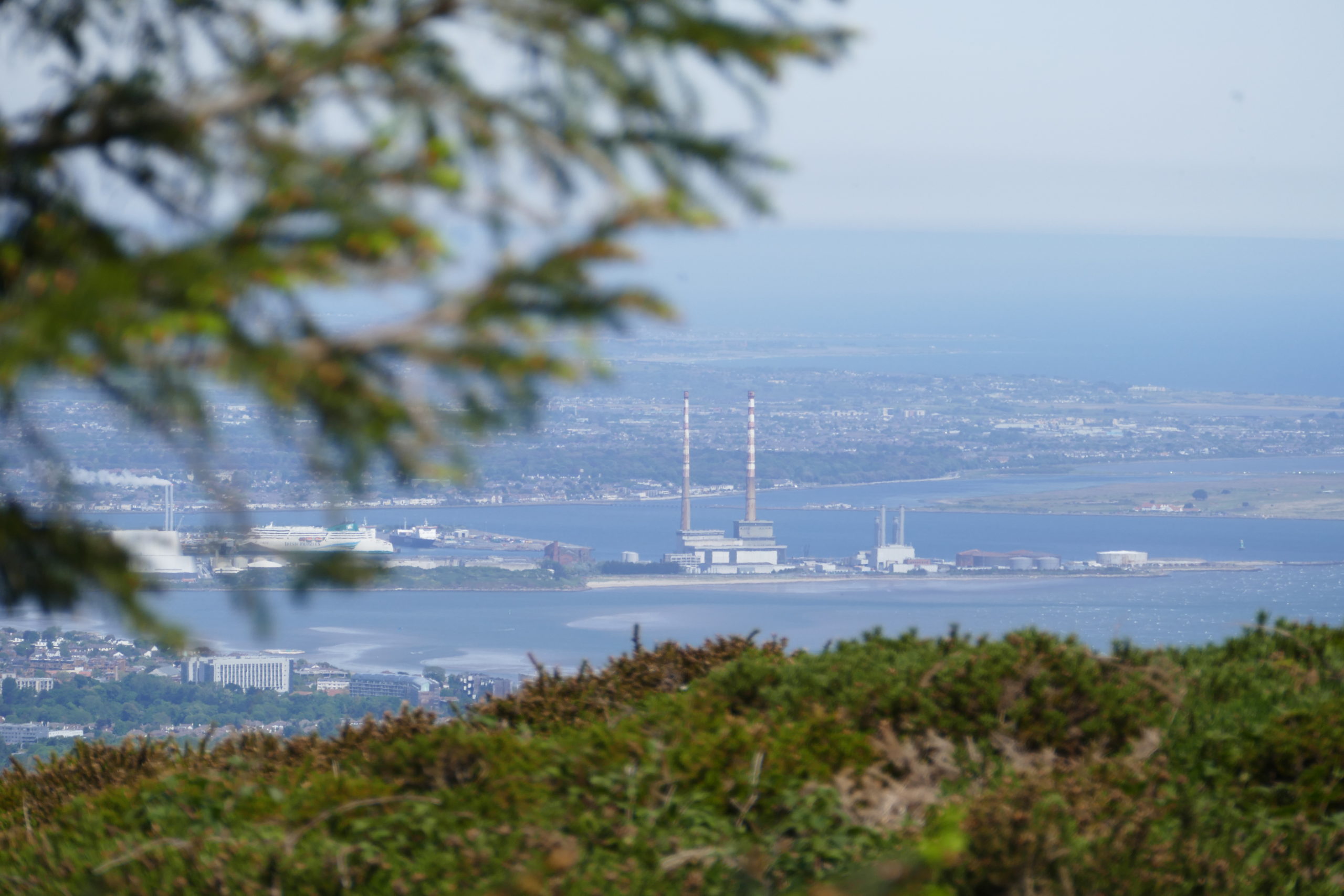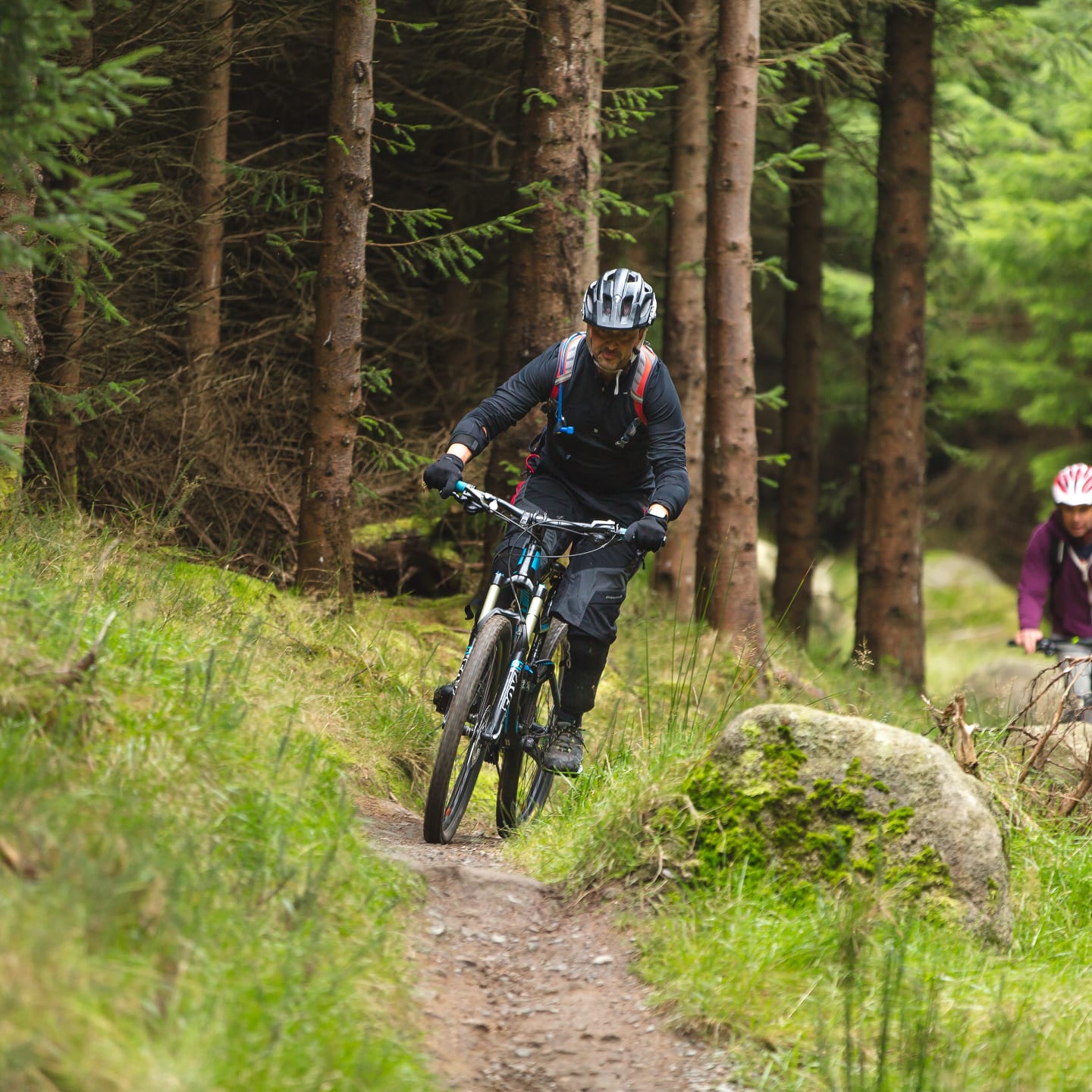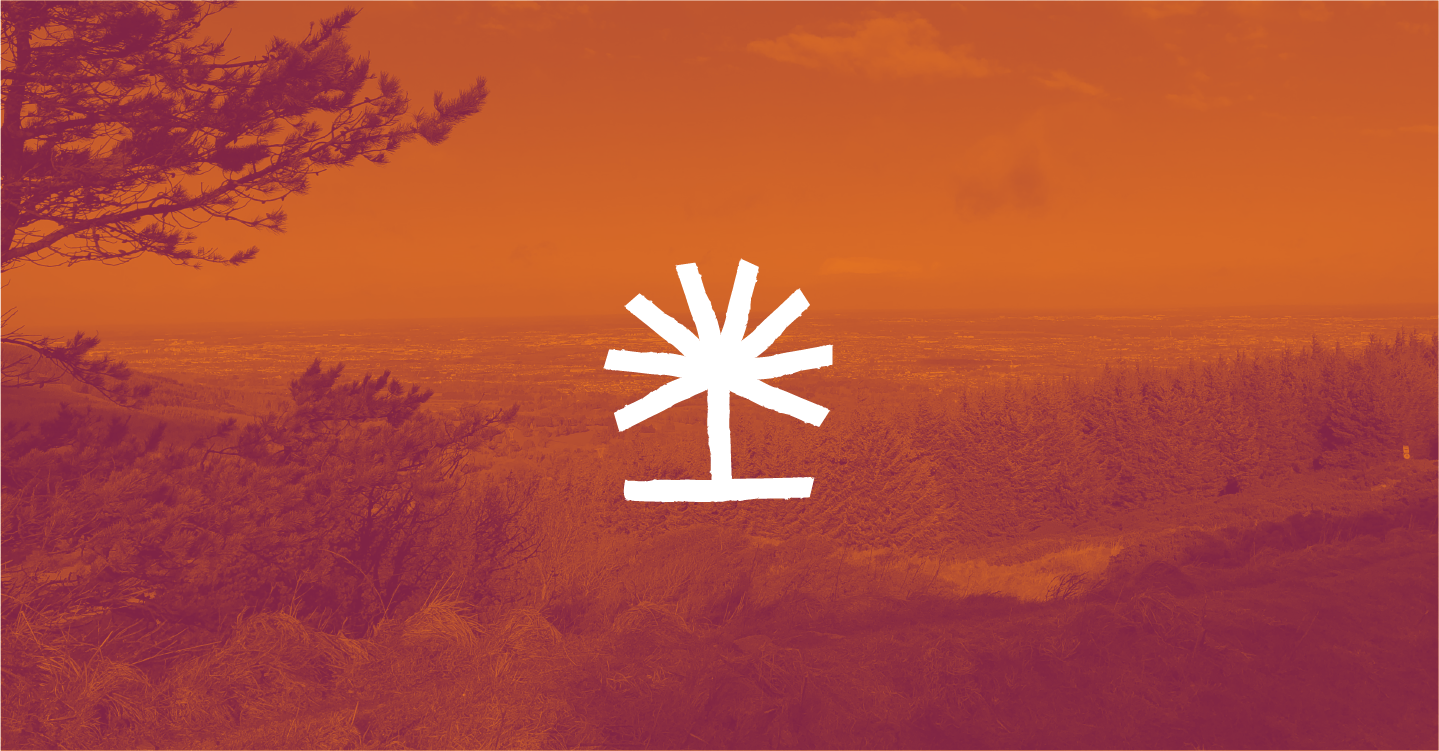A beginner’s guide to Continuous Cover Forestry
What is Continuous Cover Forestry? How does it work? What are the benefits? And what does it mean for the Dublin Mountains? In this blog, we explain the basics.
There are many benefits to Continuous Cover Forestry
Continuous cover forestry (CCF) is an approach to forest management where the forest canopy is retained and individual or small groups of trees are removed at certain times to allow light reach the forest floor and new seedlings to grow.
Gradually, over time, the forest will develop into a multigenerational forest and a more diverse forest with different layers beneath the canopy and a greater diversity of species. It does this by mimicking natural processes in the forest such as a small pocket of trees blowing over, creating a gap and thereby allowing new trees to grow in their place.
Continuous cover forestry is often used to deliver multiple benefits such as outdoor recreation, enhancing the landscape, stabilising soils, protecting water, enriching biodiversity while also producing valuable timber. It is also lowers the risk of damage from pests and diseases and makes the forest less prone to big windblow events.
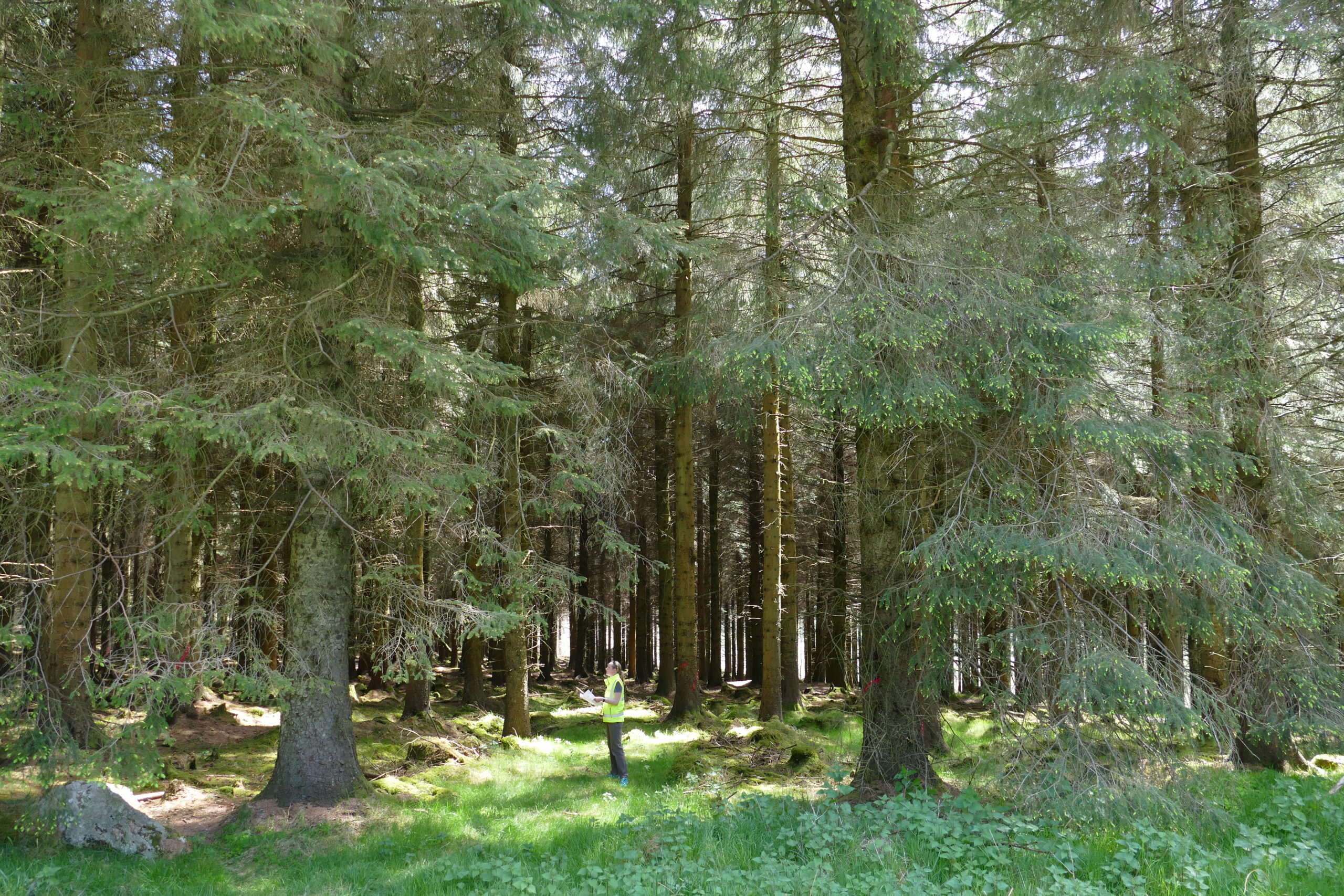
Karen Woods in Ballyedmonduff forest before CCF thinning operations
It’s not straightforward, though
CCF can be challenging to practice in Ireland. There are three main reasons why:
1) The wind. Our consistently strong winds and the large storms that regularly hit the country often blows trees over.
2) The rain. Our high rainfall and mild climate is great for growing trees, but it’s also great for growing other species like bramble, bracken, rhododendron, which then compete with the tree seedlings.
3) The soil. In some places, the ground can be too soft to use CCF techniques. Ordinarily, harvesting machines will cover the ground with a ‘brash mat’ made out of small branches to protect soils as they drive over them. But because not many trees are cut down in a CCF intervention, there isn’t enough brash to do that. Working without a brash mat could lead to soil compaction and rutting, washing sediment into water courses.
So when foresters thin a CCF stand, we have to strike a careful balance: allow enough light in for new seedlings to grow, without opening the canopy so much that it leads to the weed growth outcompeting the seedling growth, or trees in the canopy blowing over, while protecting the soil. In some areas, it’s simply not possible – this is why we’re using another approach (R&R, removing timber forests and replanting with native woodlands) in some areas of the Dublin Mountains.
Each time we thin to create gaps, the trees in the canopy continue to grow and within a few years, they’ll close the gap. So when that happens, we need to go back into the forest and open it up again (usually every 4 to 6 years), all the while continuing to manage the overall stability of the forest.
New trees grow naturally instead of being planted
One of the big benefits of CCF is that it enables foresters to manage the forest through natural regeneration. We don’t need to go in and plant trees anymore – new seedlings grow by themselves from seed that either falls from the trees above or is carried in by the wind or bird droppings. These seedlings need different light levels to grow, depending on the species:
- Species like Scots pine (native), larch (non-native) and birch (native) are what we call pioneer species – they need lots of light to grow.
- Spruce and Douglas fir (both non-native) are a bit more shade tolerant and don’t need quite as much light.
- Other species like beech or western hemlock (both non-native) are shade tolerant and can grow in much more shady conditions.
In the Dublin Mountains, many of the forests are dominated by Sitka spruce (see a detailed blog on the current species mix of the Dublin Mountains here). Because of this, most of the natural regeneration will be Sitka spruce seedlings.
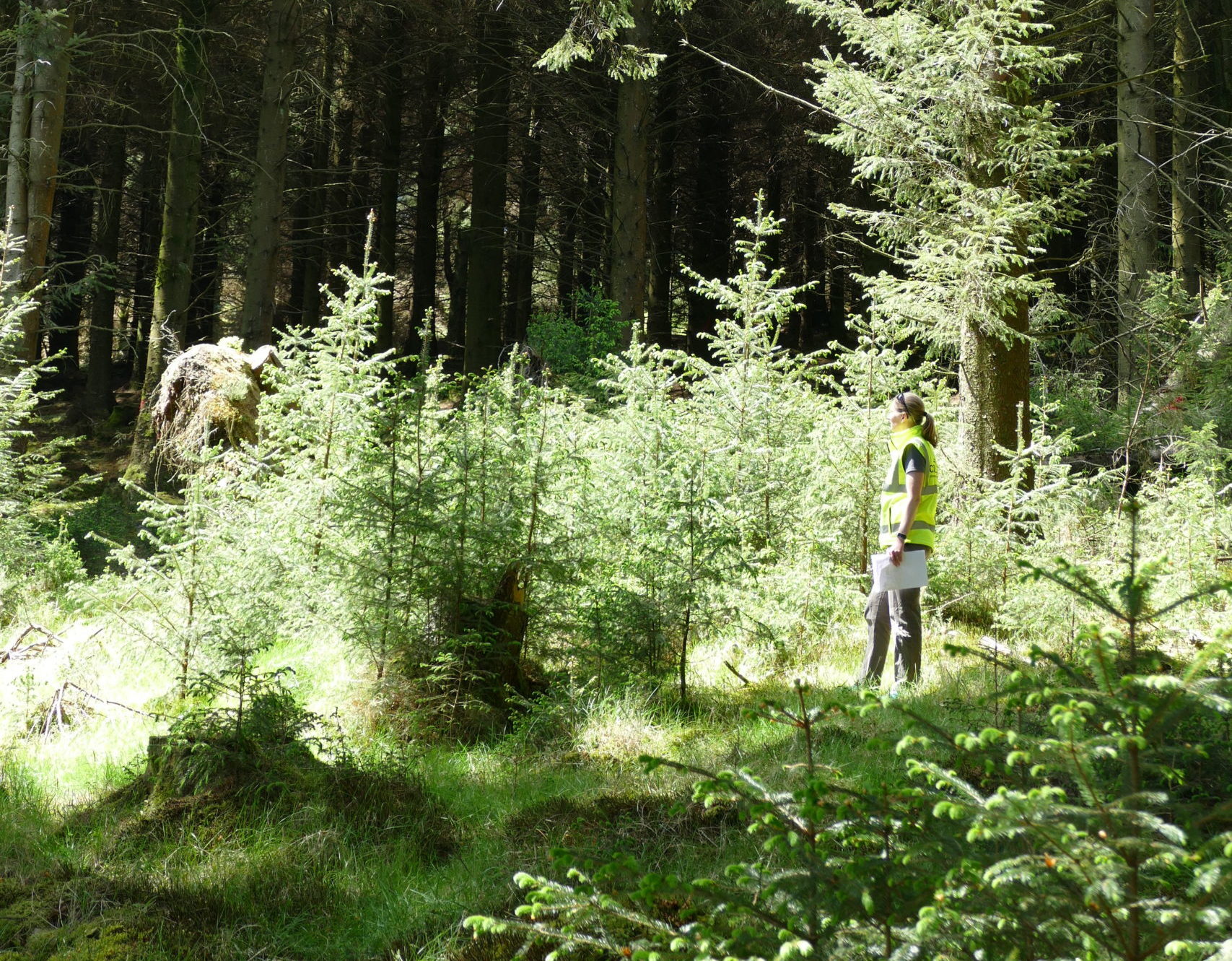
Sitka spruce regenerating naturally in an area of ‘windblown’ trees in Ballyedmonduff forest
But we will be planting native trees to increase diversity
Part of our ambition for these forests though is to increase their species diversity, so we’ll be adding to the natural regeneration by planting some native broadleaves like birch and rowan in the more open gaps.
We have seen some natural regeneration of rowan and birch in the Dublin Mountains, but it all tends to get eaten by deer before it has a chance to properly establish. Any young native trees will need protection from the deer in order to survive and grow, so we will need to either fence them off in an ‘exclosure’, or use tree shelters (if you see plastic wraps around young trees, this is what they’re for).
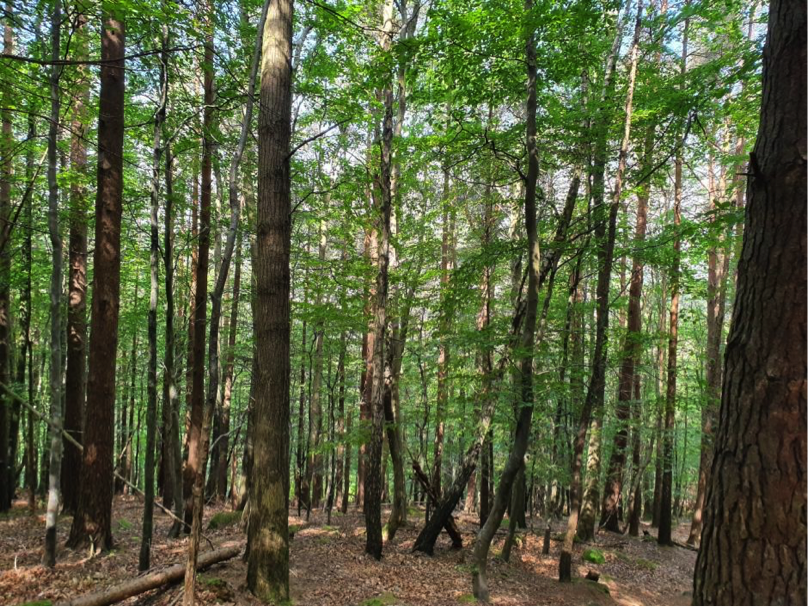
Larch with some Scots pine, oak and birch (CCF thinning to favour native species)
Good things come to those who wait
Forests by their very nature take time to plan, develop, grow and transform, so don’t expect massive change overnight. The Dublin Mountains Makeover will be a gradual transformation process.
To date most of the Dublin forests have been managed by the typical clearfell and replant system, a system that focuses primarily on timber production and has resulted in a vibrant timber processing industry, but now the emphasis has changed to people and nature and a new kind of forest management.
CCF will be used in a variety of forest habitats to encourage regeneration in the beautiful, older Scots pine, larch and mixed forests, and to transform the younger spruce stands into more diverse woodlands, with a greater mix of species. We will also use CCF in some of mature Sitka spruce forests to continue to grow on the big trees, and maintain a permanent forest cover, but aim to gradually increase the diversity beneath the main canopy to allow an understorey of spruce and other tree species develop, and also a richer diversity of plants on the forest floor. Slowly, we hope to see these forests develop into mixed species forests, and provide improved habitat for insects, birds and other animals.
The thinnings from the forest become local Irish timber
The trees felled during the CCF thinning operations will be cut into logs and sold to local sawmills or panel board mills and processed into sustainable and renewable sawnwood and panels for the construction sector to help us build new homes with local Irish timber, pallets for transporting goods, and fencing materials.
In 2020, we will thin three areas in the Dublin Mountains using CCF: Ballyedmonduff, Cruagh and Barnaslingan forests. You might see some trees with red/pink forward slashes (like this: /) on them at the moment – these are the trees that will be cut to let the light reach the forest floor. Keep an eye on the Project Updates section of the Dublin Mountains Makeover webpage and sign up to our newsletter to find out when forest operations will be taking place and be the first to hear about temporary trail diversions.
